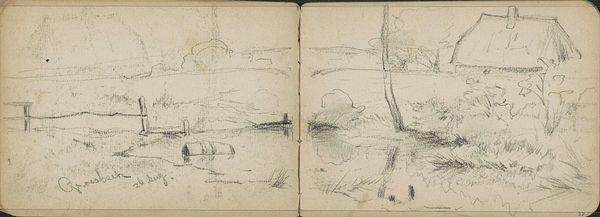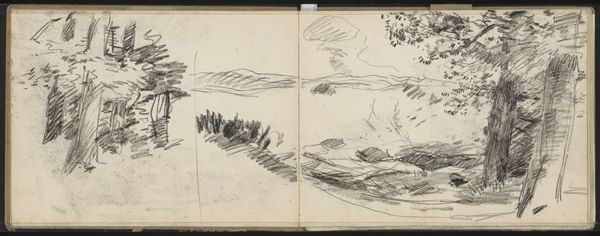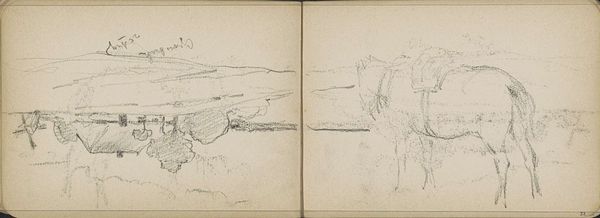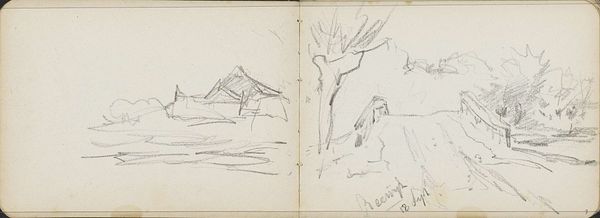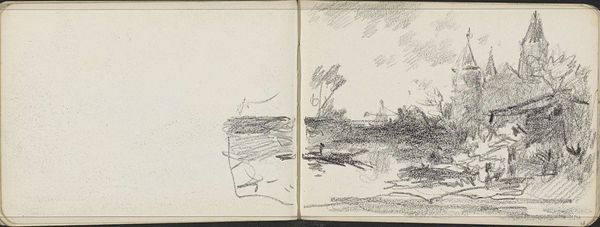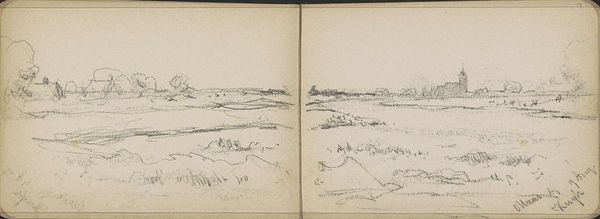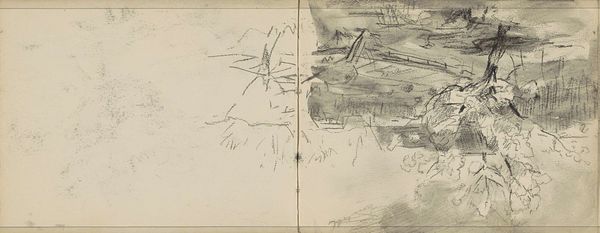
Dimensions: height 113 mm, width 159 mm
Copyright: Rijks Museum: Open Domain
Curator: This compelling sketchbook drawing is by Willem Cornelis Rip, possibly created between 1896 and 1898, and is titled "Thornsche molen te Ooij." Editor: Oh, I love this! There’s something so intimate about sketchbook art, isn't there? The way the artist captures the light with just a few pencil strokes… It feels almost stolen, like we’re glimpsing a private moment. Curator: Indeed. Sketchbooks offer a fascinating window into an artist's process. This particular piece offers us an engagement with the Dutch landscape, which we must remember had potent symbolic weight, particularly towards the end of the nineteenth century when nationalist sentiments were on the rise. How might the image of a windmill in this landscape operate ideologically, for example? Editor: That makes sense! It’s interesting how the artist has used such sparse lines to suggest so much: the windmill dominating the scene with so much of it fading out into the sketch unfinished, and the reeds in the foreground adding a feeling of immediacy to the open vista. It looks almost meditative to create this! Curator: Absolutely. The windmill is an easily recognizable symbol in Dutch culture, representing both industry and a kind of steadfastness in the face of environmental forces. Moreover, such images also invite commentary on the social conditions for the rural working class who operated the mills. Editor: It’s funny, when I look at it, I just see my childhood summers—vast open skies, those lovely clumps of unruly grasses, and just the general feeling of being outside. Suddenly the world is just open to the possible with those wispy unfinished lines implying the infinite. It has a real dreamlike quality, almost a half-remembered memory. Curator: And your personal connection to this drawing matters. By understanding this image through both cultural and personal frameworks, we're able to really flesh out this work with greater context. Editor: Definitely! I always come away from these sketches with the sense of how even the smallest, most casual observation can lead you down these incredibly rich paths! Curator: Agreed! Thinking about this artwork, I appreciate its capacity to represent and engage complex issues across identity, culture, and art.
Comments
No comments
Be the first to comment and join the conversation on the ultimate creative platform.



